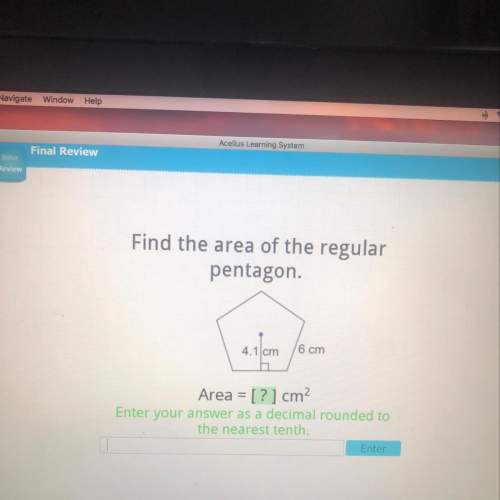Question Completion Status:
A Moving to another question will save this response.
Question 3<...

Mathematics, 11.04.2021 21:20 rayanne6050
Question Completion Status:
A Moving to another question will save this response.
Question 3
A scientist begins with 20 bacteria cells that grow in number at a relative rate of 1/7 per week.
Write a function equation to represent C(w), the number of cells after w weeks. Then use your equation to determine how long
DO NOT use a decimal approximation for the relative rate. Write your equation using fractions and use them in your calculation
Round your final answer to the nearest tenth

Answers: 2


Other questions on the subject: Mathematics


Mathematics, 21.06.2019 16:40, jsmith4184
Ajar contains a mixture of 20 black marbles, 16 red marbles, and 4 white marbles, all the same size. find the probability of drawing a white or red marble on the first draw. 125 12 01 next question ask for turn it in
Answers: 2

Mathematics, 21.06.2019 21:30, jerenasmith77
Are the corresponding angles congruent? explain why or why not.
Answers: 2

Mathematics, 21.06.2019 21:30, gonzalezashley152
In a test for esp (extrasensory perception), the experimenter looks at cards that are hidden from the subject. each card contains either a star, a circle, a wave, a cross or a square.(five shapes) as the experimenter looks at each of 20 cards in turn, the subject names the shape on the card. when the esp study described above discovers a subject whose performance appears to be better than guessing, the study continues at greater length. the experimenter looks at many cards bearing one of five shapes (star, square, circle, wave, and cross) in an order determined by random numbers. the subject cannot see the experimenter as he looks at each card in turn, in order to avoid any possible nonverbal clues. the answers of a subject who does not have esp should be independent observations, each with probability 1/5 of success. we record 1000 attempts. which of the following assumptions must be met in order to solve this problem? it's reasonable to assume normality 0.8(1000), 0.2(1000)%30 approximately normal 0.8(1000), 0.2(1000)% 10 approximately normal srs it is reasonable to assume the total number of cards is over 10,000 it is reasonable to assume the total number of cards is over 1000
Answers: 1
You know the right answer?
Questions in other subjects:


History, 03.02.2021 23:10

Geography, 03.02.2021 23:10


Mathematics, 03.02.2021 23:10

Physics, 03.02.2021 23:10



Mathematics, 03.02.2021 23:10

World Languages, 03.02.2021 23:10




